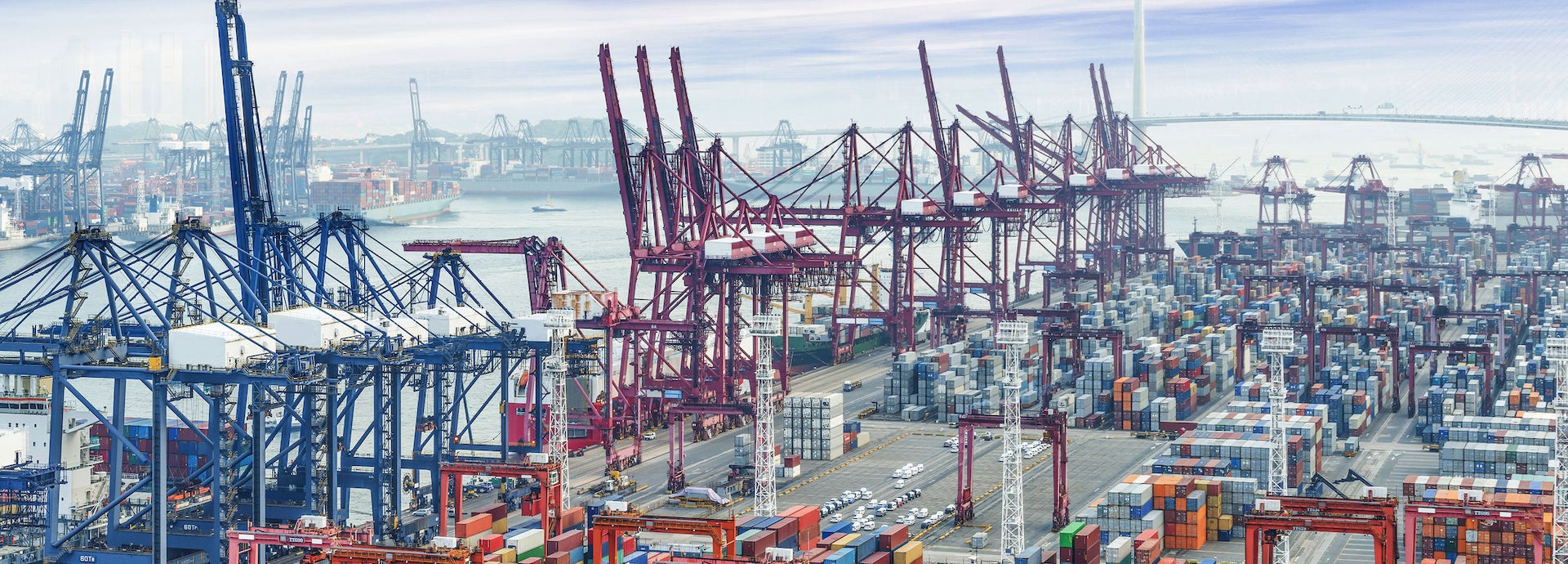

In most cases, a broken-down vehicle stuck in the middle of the road is just a temporary inconvenience. But when that vehicle happens to be a giant cargo container on one of the world’s busiest trade routes, the ensuing mess can shake up the world.
In March 2021, a massive 200,000-tonne container ship wreaked havoc on global trade. The ship was stuck sideways in the Suez Canal, one of the busiest routes in global trade. The Suez Canal connects Asia, Europe, and the Middle East. According to reports, each day of the stalemate held up more than 100 vessels carrying goods worth USD 9.6 billion. Some of these ships were carrying critical resources like oil. Therefore, the delay also caused energy prices to spike immediately, even though they settled down soon.
It took six days; many tugboats and dredging to get the stuck ship moving. If these had not worked, then some of the cargo and fuel from the ship would have to be offloaded, which is a more complex, lengthy, and costly operation. Even today the logjam poses an important question for the logistics and shipping industry.
Could the disaster at the Suez Canal have been averted? Yes. But that would require sailing into unchartered territory. So far it was believed that logistics via shipping and air cargo are both reliable and predictable. Based on that, inventories were lean to reduce the risk of obsolescence and cash.
“What we are seeing as a consequence is the concentration of risk. Firms source at a single factory for a product because that can provide economies of scale, shippers use ever-larger container ships because of the lower delivered cost. Then when some disruption occurs, that concentration leads to bigger shocks than might otherwise have happened,” explains Willy Shih, Robert & Jane Cizik Professor of Management Practice at Harvard Business School.
In deep waters
Some of these shocks are already underway albeit in a scattered manner. For instance, in May, the Yantian Port, one of China’s busiest ports, announced that it won’t accept new export containers because of a COVID-19 outbreak. The partial shutdown to clear the port’s backlog and deal with the outbreak dragged on longer than expected. According to reports, this led to snarled trade routes and a spike in already high freight prices.
On the other side of the globe in the US, rising imports on the back of improved consumer demand have led to a capacity crunch, port congestion and supply chain disruptions. According to industry data, spot rates for a 40-foot container from Shanghai to the US have nearly quadrupled. The average time of container ships at berth has also risen from an average 4–5 days to 6 days. And all this may just be the beginning of a rather chaotic peak season (August through October). That is when carriers limit intermodal bookings, charge port-congestion fees and demand-surge fees.
“The continued push through San Pedro Bay has led to huge congestion at the terminals, truckers and chassis shortages, and back-ups at distribution centres who have insufficient capacity. One of the challenges ocean carriers faces concerns the visibility and predictability of cargo loads. If you ask them, they all are pleading for better forecasts so they can do their load planning. Everyone is having trouble with forecasting, and this exacerbates a bad situation,” says Shih.
Lateral Moves
He explains that multiple routing could help ease this problem. For instance, importers in the North Pacific trade lane can consider alternative routes to bring in ocean cargo via the Panama Canal to Atlantic and Gulf Coast ports, Suez to Atlantic Coast ports, or Prince Rupert and Vancouver or Northwest Seaport Alliance instead of ports in Southern California. But the maritime sector will have to do much more to cope with this new set of challenges.
‘The established just-in-time supply chain model will be reassessed to include considerations such as resilience and robustness. Diversification in sourcing, routing and distribution channels will grow in importance. Moving away from single country-centric location sourcing to multiple location sourcing that is not only focused on cutting costs and delays but also on risk management and resilience will evolve further,’ state’s UNCTAD’s Review of Maritime Transport 2020.
The report highlights the key trends that will emerge due to the COVID-19 pandemic. These include, enhanced risk management and resilience-building capabilities, an accelerated shift in globalisation patterns and supply chain designs, a strengthened case for digitalisation and dematerialisation and adjustments in maritime transport to adapt to the new operating landscape.
Innovate to Accelerate
Experts say that there are early signs of this already happening. For instance, it is now possible to buy or sell cubic metres of containers space in a digital marketplace that has been built upon collaborative block-chain principles. Predictive edge analytics is being used to create a live digital twin of the vessel to minimise downtime and improve efficiency. And sensors are being used to identify disruptions, inefficient and insecure routes.
As inclusive trade, localisation, and regionalisation gain traction - supply chain designs too are changing. Near sourcing is gradually re-emerging. All these points to the fact that global trade, as we knew it is in for a sea change.
“Anytime there is change, there is opportunity. Obviously, there are opportunities for services providers as these trade patterns shift, but when you move a supply location/supplier, there is also opportunity created by the unfreezing of existing processes. An opportunity to rethink how the work is done, incorporate more modern process technologies, redesign the product flow, incorporate more digital technologies in tracking and monitoring,” explains Shih.
Experts point out that even though manufacturers will continue seeking lower costs; hereon they will also keep several other considerations like disruptions in mind. That would require reimagining, rethinking and redesigning globalisation.
Did you like this? Subscribe to Insights updates!
Once every six weeks, you will get the top picks – the latest and the greatest pieces – from this Insights channel by email.
